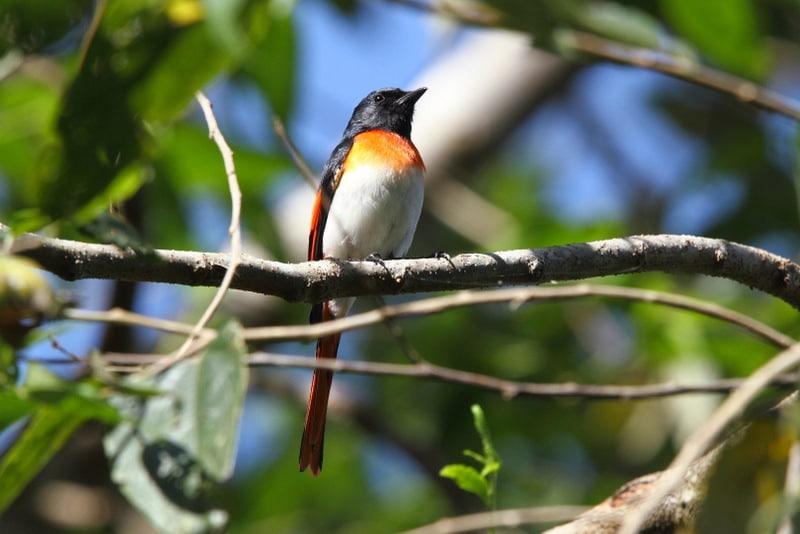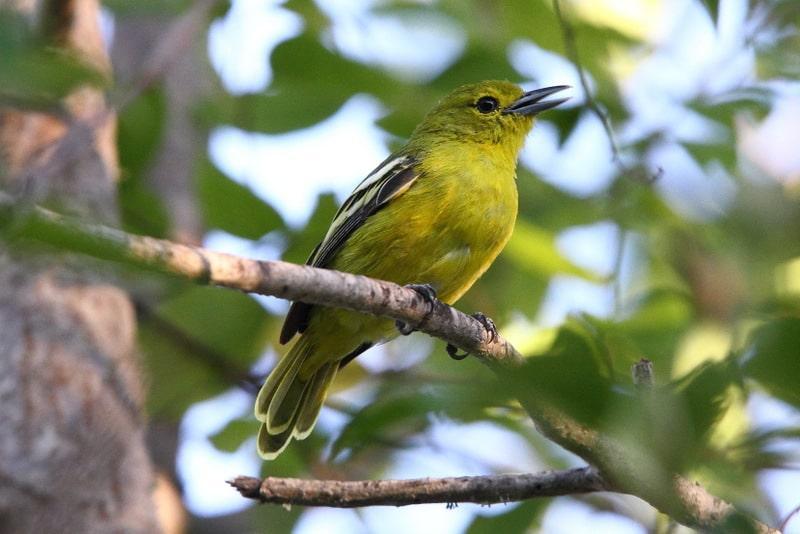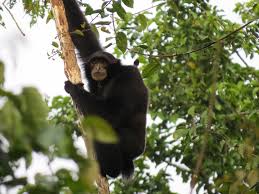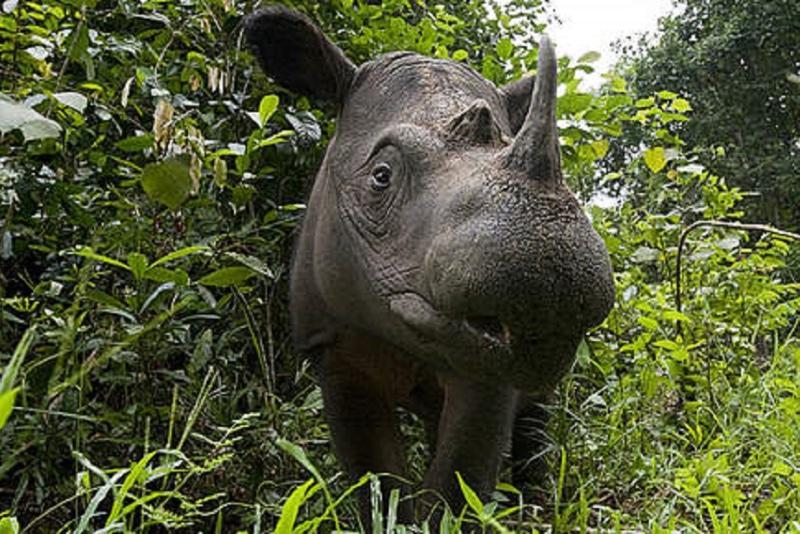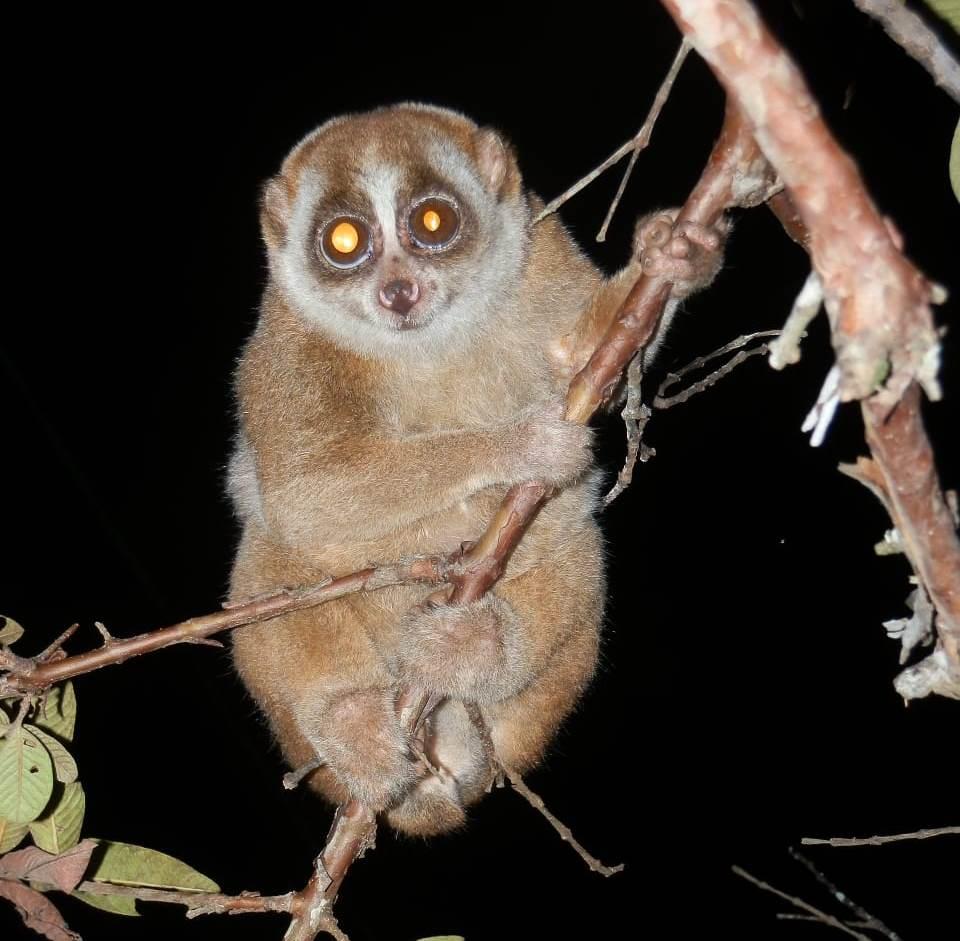Way Kambas National Park is a national park covering 1,300 square kilometres in Lampung province, southern Sumatra, Indonesia.
It consists of swamp forest and lowland rain forest, mostly of secondary growth as result of extensive logging in the 1960s and 1970s.[3] Despite decreasing populations, the park still has a few critically endangered Sumatran tigers, Sumatran elephants and Sumatran rhinoceroses. It also provides excellent birdwatching,[4] with the rare white-winged wood duck among the over 400 species present in the park.
Threats to the park are posed by poaching and habitat loss due to illegal logging. Conservation efforts include patrolling and the establishment of the Sumatran Rhino Sanctuary and the Elephant Conservation Centre. https://en.wikipedia.org/wiki/Way_Kambas_National_Park
It consists of swamp forest and lowland rain forest, mostly of secondary growth as result of extensive logging in the 1960s and 1970s.[3] Despite decreasing populations, the park still has a few critically endangered Sumatran tigers, Sumatran elephants and Sumatran rhinoceroses. It also provides excellent birdwatching,[4] with the rare white-winged wood duck among the over 400 species present in the park.
Threats to the park are posed by poaching and habitat loss due to illegal logging. Conservation efforts include patrolling and the establishment of the Sumatran Rhino Sanctuary and the Elephant Conservation Centre. https://en.wikipedia.org/wiki/Way_Kambas_National_Park
Officially established in 1985, the Elephant Training Center, located 9 km from the park’s Plang Ijo entrance, is an establishment aimed to protect the existence of the elephant and at the same time create mutual benefit for both the elephants and men. The training center is also a reminiscent of the time when kings or sultans ruled Sumatra, when elephants were trained and deployed in warfare and also for ceremonial purposes. Here, visitors can observe elephants perform various tasks such as transporting lumber or plowing fields. They can also perform peculiar activities such as playing football or other entertaining performances.
Way Kambas National Park is located in Lampung province, South Sumatra, Indonesia. This national Park is consisting of forest and preservation for Sumatran tigers and elephant sanctuary. This park also becomes a breeding center or Sumatran Rhino Sanctuary (SRS) that has been build up in 1995. Way Kambas National Park is a representative of the lowland forest ecosystem consisting of freshwater swamp forest, meadow grass, and coastal forests in Sumatra.
Plant species that grow in this national park are, api-api (Avicennia marina), Sonneratia (Sonneratia sp.), Palm (Nypa fruticans), Gelam (Melaleuca leucadendron), salam (Syzygium polyanthum), mire (Glochidion borneensis), almond (Terminalia cattapa), sea pine (Casuarina equisetifolia), pandan (Pandanus sp.), puspa (Schima wallichii), meranti (Shorea sp.), oil (Dipterocarpus gracilis), and ramin (Gonystylus bancanus).
Way Kambas National Park has 50 species of mammals such as Sumatran rhino (Dicerorhinus sumatrensis sumatrensis), Sumatran elephant (Elephas maximus sumatranus), Sumatran tiger (Panthera tigris sumatrae), tapir (Tapirus indicus), coyote (Cuon alpinus sumatrensis), gibbon (Hylobates syndactylus syndactylus); 406 forest bird species including ducks (Cairina scutulata), yarn and clothing stork (Ciconia episcopus stormi), stork casks (Leptoptilos javanicus), Crested Fireback (Lophura ignita), Peacock (Argusianus argus argus), Little Cormorant snake ( Anhinga melanogaster); different types of reptiles, amphibians, fish, and insects.
Wild elephants which are trained in the Elephant Training Centre can be used as elephant riding, attractions, transport timber and plow the fields. At the elephant training center, we can see trainers that educate and train wild elephants, we can also see the attraction of elephants playing football, dancing, shaking hands, respectfully, draping flowers, pull the rope, swimming and many other attractions. This elephant training center was established in 1985. Until this day, it has been successful in educating and tame elephants around 290 elephants.
Way Kambas National Park consists of 1,300 square kilometres of swamp forest and lowland rainforest.
Becoming a reserve in 1972, It has long been known for its significant population of Sumatran Elephants as well as Sumatran Tigers, Macaques, Siamang Gibbons,Malayan Tapirs, and over 300 recorded bird species including the endemic White Winged Duck.
In the 1990s, it was revealed that the park was also home to a little-known or seen population of around 40 Sumatran Rhinos – one of only three surviving populations in Indonesia.
The park now contains a Sumatran Rhino Sanctuary and an Elephant Conservation Centre including an Elephant Hospital, all committed to the conservation and care of these rare and endangered species.
The Siamang Gibbons have unique voices and are very noisy in the mornings, and if you are lucky you might see them. Every once in a while, our guests even catch sight of a Sumatran Tiger!
River Safari Trip
The river safari is a fantastic opportunity to see everything the park has to offer, see Crocodiles, primates, birds, mammals perhaps even a Sun Bear or wild Elephants. It is very unlikely, but you may even see a Rhino or Tiger!
The river safari trips are arranged through the national park and a ranger will accompany you or your group on the boat and for a hike into the Tiger habitat. The river safari usually starts in the afternoon and runs into the evening where you can enjoy a fabulous atmosphere as the dark closes in.
Include a walk on the main way to the Kanan River and also past the Elephant Centre to Bambangan, some birding groups see or hear over 150 species of birds during an extended stay. The endemic White Winged Wood Duck is one to watch for.
A night walk tour is not to be missed! Join our experienced local guide Heri for one of his exciting night walks through the National Park. The sights and sounds of the flora and fauna are entirely different at night! Here you will see and hear the behaviour of nocturnal birds, and mammals, and if you are
From the river boat you can also head to Kalibiru (around 60 minutes). Here you can enjoy a fascinating walk to Rawa Gajah, a swamp area where wild Elephants are often seen. Depending on the season, this area is may be grassland or it may be submerged under waist deep water. Sambar Seer, Wild Pigs, Binturong and the endangered White Winged Wood Duck have all been seen here. The trail often shows scats, pug marks and tree scratchings from Tigers.
After a picnic lunch, take a slow walk back to the boat and you may see primates, different bird species, deer or elephants on the journey home.
The Elephant Response Unit is a unique and innovative project that has successfully saved hundreds of wild elephants from harm. The unit was devised to reduce the conflict between humans and elephants, by using trained elephants to herd wild elephants away from villages. With fewer elephants destroying villages, fewer villagers now harm or kill the elephants in an effort to protect their homes and agriculture.
The ERU has staff monitoring nightly for marauding elephants. You can visit unit headquarters during your stay here and even attend any callouts that may happen while you are present. This is an exciting opportunity for our guests to see their work in action
The Elephant Conservation Centre offers a great opportunity to see the unique life long relationship between a Mahout and their Elephant. When visiting bring some sugar cane from the lodge grounds to help you make friends! If you wish, you can stay here all day to help to wash and feed the local residents too.
Take a stroll here for a snapshot of day to day living. Most villagers work as farmers and gardeners, and if you wish we can book the local dance performance group to entertain you at the lodge.
Bambagan is an area 12 km beyond the Elephant Centre which has suffered from fire destruction and is being reforested by the park with the help of the NGO - ALERT Conservation. The area is still threatened by poachers and illegal burning.
A visit to Bambangan includes the Ranger station where you will be given a local perspective of the area by a park ranger. Here you will enjoy a picnic lunch and meet some unique park rangers who have dedicated their lives to conservation.
You can also plant a tree for a minimal fee and contribute to the reforestation and new forest around you. After a siesta, it is time for a short hike to the river accompanied by your guide and a park ranger to see if you can catch a glimpse of the endemic White Winged Wood Duck and many other exotic
If you love butterflies, visit Butterfly Bridge one day for lunch – here up to 50 species have been seen during a one-hour period. Large populations of butterflies occur only at certain times of the year prior and just after the rains; but try anyway.
Sumatran Rhino Tour Indonesia
Rhino Conservation
Way Kambas National Park is also home to the Sumatran Rhino Conservation Centre. The centre is currently closed to visitors due to a health and breeding program for this critically endangered species.
Taronga Zoo in Sydney, Australia is the biggest funder for this important project and it is now possible for some visitors to arrange to meet with the resident veterinarian. If you wish to enquire about this, please inform our booking team when planning your time here.
